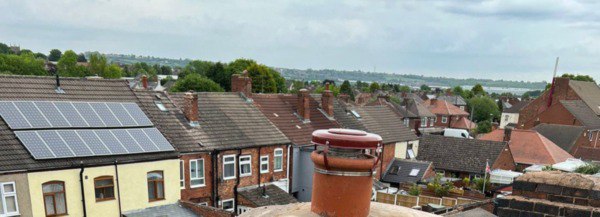Navigating the Foot Traffic Maze: Understanding the Impact on Commercial Roofing Systems
Introduction: Commercial roofing systems are designed to withstand a variety of environmental stressors, from harsh weather conditions to UV exposure. However, foot traffic is one often overlooked factor that can significantly impact the performance and longevity of a commercial roof. Whether routine maintenance, HVAC inspections, or rooftop gatherings, foot traffic can take a toll on your roof over time. In this guide, we’ll explore the impact of foot traffic on commercial roofing systems and share tips for minimising damage and maximising roof lifespan.
Understanding the Impact:
Foot traffic can cause various issues for commercial roofing systems, depending on factors such as frequency, weight distribution, and the type of roofing material. Some common impacts of foot traffic include:
- Wear and Tear: Constant foot traffic can gradually wear down the protective layers of roofing materials, leading to surface damage, abrasions, and deterioration.
- Membrane Damage: For single-ply membrane roofs, punctures, tears, and cuts caused by foot traffic can compromise the integrity of the roofing system and increase the risk of leaks.
- Sealant Failure: Sealants around roof penetrations such as vents, pipes, and HVAC units can degrade over time due to foot traffic, resulting in water infiltration and potential structural damage.
- Insulation Compression: Excessive foot traffic can compress insulation materials, reducing their effectiveness and compromising energy efficiency.
Minimising Damage:
While some level of foot traffic may be unavoidable, there are steps you can take to minimise its impact on your commercial roofing system:
- Establish Access Routes: Designate specific pathways for maintenance personnel and contractors to follow when accessing the roof. Avoid walking on areas with sensitive roofing materials or equipment whenever possible.
- Implement Protective Measures: Install walkway pads, roof mats, or rubber pavers in high-traffic areas to distribute weight evenly and reduce the risk of damage to the roof surface.
- Schedule Maintenance Carefully: Coordinate roof inspections, repairs, and maintenance activities to minimise the frequency and duration of foot traffic on the roof. Schedule these tasks during periods of mild weather to reduce the risk of damage.
- Educate Personnel: Train employees and contractors on proper rooftop safety protocols and the importance of minimising foot traffic on the roof. Please encourage them to report any signs of damage or wear they observe during their visits.
Regular Inspections and Maintenance:
Regular inspections and maintenance are essential for identifying and addressing any issues caused by foot traffic before they escalate into more significant problems. Schedule periodic roof inspections by qualified roofing professionals to assess the roof’s condition and identify any areas of concern. Prompt repairs and maintenance will help extend the lifespan of your commercial roofing system and prevent costly damage.
Conclusion: Foot traffic may seem a minor concern compared to other threats facing commercial roofing systems, but its cumulative impact over time can be significant. By understanding the potential risks and implementing proactive measures to minimise damage, you can protect your investment and ensure the long-term performance of your commercial roof. Prioritise regular inspections, maintenance, and safety protocols to keep your roof in top condition for years.
Call us on: 01234 676 690
Click here to find out more about LPO Roofing Kempston
Click here to complete our contact form and see how we can help with your roofing needs.

